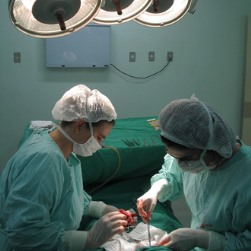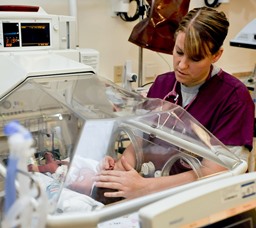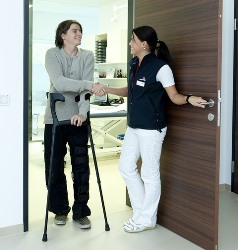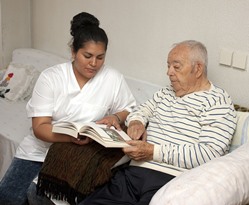How to Find the Right Nursing College near Hartford South Dakota
 Finding the best nursing program near Hartford SD may feel like a difficult project, particularly if you don’t know what to look for in a good degree program. As you may presently know, for you to practice as a registered nurse, you must receive the proper education and training in order to become licensed. So it is essential that you research and determine the qualifications of each college you are thinking about before enrolling in your final selection. Regrettably, too many potential students base their determination entirely on the price of tuition and the proximity of the school. Going with the least costly program or the one that is nearest to your house is undoubtedly not the most reliable way to decide on a nursing program. There are many key additional factors to look into before you make a decision where to enroll in classes. But before we delve into that checklist, let’s first review what the role of a registered nurse is in our healthcare system, together with the nursing degree alternatives that are available.
Finding the best nursing program near Hartford SD may feel like a difficult project, particularly if you don’t know what to look for in a good degree program. As you may presently know, for you to practice as a registered nurse, you must receive the proper education and training in order to become licensed. So it is essential that you research and determine the qualifications of each college you are thinking about before enrolling in your final selection. Regrettably, too many potential students base their determination entirely on the price of tuition and the proximity of the school. Going with the least costly program or the one that is nearest to your house is undoubtedly not the most reliable way to decide on a nursing program. There are many key additional factors to look into before you make a decision where to enroll in classes. But before we delve into that checklist, let’s first review what the role of a registered nurse is in our healthcare system, together with the nursing degree alternatives that are available.
Registered Nurse Job Functions
 Registered nurses are the most extensive occupation in the healthcare delivery system. RNs practice in a large number of different medical settings, namely Hartford SD hospitals, private practices, outpatient clinics, nursing homes and even schools. Their basic duty is to support doctors in the treatment of their patients. Having said that, the particular duties of a registered nurse will depend on their job or specialization along with where they work. A few of the duties of an RN may include:
Registered nurses are the most extensive occupation in the healthcare delivery system. RNs practice in a large number of different medical settings, namely Hartford SD hospitals, private practices, outpatient clinics, nursing homes and even schools. Their basic duty is to support doctors in the treatment of their patients. Having said that, the particular duties of a registered nurse will depend on their job or specialization along with where they work. A few of the duties of an RN may include:
- Providing medications
- Monitoring patients
- Performing physical examinations
- Coordinating care
- Supervising LPNs, LVNs and nurse aides
- Educating patients and their families
- Managing health records and charts
Nurses with a more advanced degree may have more complex job duties and responsibilities. Nurse practitioners (NP), as an example, must hold a Master’s Degree and often work more independently than their RN counterparts. They can deliver primary or specialty care services, prescribe medications, and diagnose and treat common illnesses or injuries.
Nursing Degrees
There is more than one degree option available to become a registered nurse. And to become an RN, a student must attend an accredited school and program. A student can obtain a qualifying degree in just 2 years, or advance to obtain a graduate degree for a total of six years. Following are some brief summaries of the nursing degrees that are available in the Hartford SD area.
- Associates. The Associate Degree in Nursing (ADN) is generally a two year program made available by community colleges. It prepares graduates for an entry level job in nursing in medical facilities including hospitals, clinics or nursing homes. Many employ the ADN as an entry into nursing and ultimately attain a higher degree.
- Bachelor’s. The Bachelor of Science in Nursing (BSN) offers more comprehensive training than the ADN. It is generally a 4 year program offered at colleges and universities. Licensed RNs may be able to complete an accelerated program based on their previous training or degree and professional experience (RN to BSN). Those applying to the program may want to progress to a clinical or administrative position, or be more competitive in the job market.
- Master’s. The Master of Science in Nursing (MSN) is typically a two year program after achieving the BSN. The MSN program provides specialization training, for instance to become a nurse practitioner or focus on administration, management or teaching.
When a graduating student has received one of the above degrees, he or she must pass the National Council Licensure Examination for Registered Nurses (NCLEX-RN) in order to become licensed. Additional requirements for licensing change from state to state, so don’t forget to get in touch with the South Dakota board of nursing for any state mandates.
LPN and LVN Courses
 There are essentially two academic accreditations available that provide instruction to become either an LPN or an LVN. The one that may be concluded in the shortest amount of time, commonly about twelve months, is the certificate or diploma program. The 2nd option is to obtain a Practical Nursing Associate Degree. These programs are broader in nature than the diploma alternative and normally require 2 years to finish. The benefit of Associate Degrees, in addition to providing a higher credential and more comprehensive instruction, are that they furnish more transferable credit toward a Bachelor’s Degree in nursing. No matter the type of credential you seek, it should be South Dakota approved and accredited by the National League for Nursing Accrediting Commission (NLNAC) or some other national accrediting organization. The NLNAC attests that the syllabus effectively prepares students to become Practical Nurses, and that the majority of graduates pass the 50 state required NCLEX-PN licensing exam.
There are essentially two academic accreditations available that provide instruction to become either an LPN or an LVN. The one that may be concluded in the shortest amount of time, commonly about twelve months, is the certificate or diploma program. The 2nd option is to obtain a Practical Nursing Associate Degree. These programs are broader in nature than the diploma alternative and normally require 2 years to finish. The benefit of Associate Degrees, in addition to providing a higher credential and more comprehensive instruction, are that they furnish more transferable credit toward a Bachelor’s Degree in nursing. No matter the type of credential you seek, it should be South Dakota approved and accredited by the National League for Nursing Accrediting Commission (NLNAC) or some other national accrediting organization. The NLNAC attests that the syllabus effectively prepares students to become Practical Nurses, and that the majority of graduates pass the 50 state required NCLEX-PN licensing exam.
CNA Courses
Unlike some other licensed nurses, certified nursing assistants do not have to earn a college degree. CNA education can be received at Hartford SD area community colleges or at vocational or trade schools. The length of the instruction can take anywhere from 1 to 3 months, resulting in either a certificate or a diploma. Within the 1987 Nursing Home Reform Act, students are mandated to receive at least 75 hours of training, 16 of which have to be clinical or “hands-on” training hours. Bear in mind that this is the minimum amount of training directed and that every state has its specific requirements. So it’s necessary to make certain that the training program you enroll in not only meets the federal requirements, but additionally those for South Dakota or the state where you will be practicing. One suggestion is to get in touch with the health or nursing board for your state to make sure that the education is state approved. Along with the training, each state requires a passing score on a competency test for certification. Depending on the state, there might be other requirements as well.
What to Ask Nursing Programs
 Once you have chosen which nursing degree to enroll in, and if to attend your classes on campus near Hartford SD or on the web, you can use the following checklist to start narrowing down your options. As you probably are aware, there are many nursing schools and colleges within South Dakota and the United States. So it is important to lower the number of schools to select from so that you will have a manageable list. As we previously mentioned, the site of the school along with the cost of tuition are undoubtedly going to be the primary two points that you will look at. But as we also emphasized, they should not be your only qualifiers. So prior to making your final choice, use the following questions to evaluate how your selection measures up to the field.
Once you have chosen which nursing degree to enroll in, and if to attend your classes on campus near Hartford SD or on the web, you can use the following checklist to start narrowing down your options. As you probably are aware, there are many nursing schools and colleges within South Dakota and the United States. So it is important to lower the number of schools to select from so that you will have a manageable list. As we previously mentioned, the site of the school along with the cost of tuition are undoubtedly going to be the primary two points that you will look at. But as we also emphasized, they should not be your only qualifiers. So prior to making your final choice, use the following questions to evaluate how your selection measures up to the field.
- Accreditation. It’s a good idea to make sure that the degree or certificate program along with the school is accredited by a U.S. Department of Education recognized accrediting agency. Besides helping make sure that you obtain a premium education, it may help in obtaining financial aid or student loans, which are oftentimes not offered in Hartford SD for non-accredited schools.
- Licensing Preparation. Licensing prerequisites for registered nurses vary from state to state. In all states, a passing score is needed on the National Council Licensure Examination (NCLEX-RN) together with graduation from an accredited school. Certain states require a specified number of clinical hours be completed, as well as the passing of additional tests. It’s important that the school you are attending not only delivers an outstanding education, but also preps you to comply with the minimum licensing requirements for South Dakota or the state where you will be working.
- Reputation. Visit online rating companies to see what the evaluations are for each of the schools you are considering. Ask the accrediting agencies for their reviews too. In addition, contact the South Dakota school licensing authority to find out if there are any complaints or compliance issues. Finally, you can call some Hartford SD healthcare organizations you’re interested in working for after graduation and ask what their judgments are of the schools as well.
- Graduation and Job Placement Rates. Find out from the RN schools you are looking at what their graduation rates are as well as how long on average it takes students to complete their programs. A low graduation rate may be an indication that students were unhappy with the program and dropped out. It’s also essential that the schools have high job placement rates. A high rate will not only confirm that the school has a favorable reputation within the Hartford SD healthcare community, but that it also has the network of relationships to help students attain a position.
- Internship Programs. The most effective way to get experience as a registered nurse is to work in a clinical setting. Essentially all nursing degree programs require a specific number of clinical hours be completed. Many states have minimum clinical hour prerequisites for licensing too. Ask if the schools have a working relationship with Hartford SD hospitals, clinics or labs and assist with the positioning of students in internships.
Nursing Online Programs
 Attending nursing programs online is growing into a more favored way to obtain instruction and earn a nursing degree. Some schools will require attendance on campus for a component of the training, and nearly all programs call for a specified amount of clinical rotation hours completed in a local healthcare facility. But since the balance of the training may be accessed online, this alternative may be a more accommodating answer to finding the free time to attend school for some Hartford SD students. Concerning tuition, some online degree programs are cheaper than other on campus options. Even additional expenses such as for commuting and study materials may be lessened, helping to make education more economical. And numerous online programs are accredited by organizations such as the Commission on Collegiate Nursing Education (CCNE) for BSN and MSN degrees. And so if your work and household obligations have left you with little time to work toward your academic goals, perhaps an online nursing program will make it more convenient to fit a degree into your active schedule.
Attending nursing programs online is growing into a more favored way to obtain instruction and earn a nursing degree. Some schools will require attendance on campus for a component of the training, and nearly all programs call for a specified amount of clinical rotation hours completed in a local healthcare facility. But since the balance of the training may be accessed online, this alternative may be a more accommodating answer to finding the free time to attend school for some Hartford SD students. Concerning tuition, some online degree programs are cheaper than other on campus options. Even additional expenses such as for commuting and study materials may be lessened, helping to make education more economical. And numerous online programs are accredited by organizations such as the Commission on Collegiate Nursing Education (CCNE) for BSN and MSN degrees. And so if your work and household obligations have left you with little time to work toward your academic goals, perhaps an online nursing program will make it more convenient to fit a degree into your active schedule.
Attending a Nursing School near Hartford SD?
Perhaps you have already made your decision to attend a Nursing Program in the greater Hartford South Dakota area. If that is the case, then the following information may prove to be both educational and useful regarding the location of your future Alma Mater.
Hartford, South Dakota
Hartford is a city in Minnehaha County, South Dakota, United States. A suburb of Sioux Falls, Hartford lies a few miles northwest of the city. The population was estimated to be 3,025 in July 2015, up from 2,534 at the 2010 census.
As of the census[3] of 2010, there were 2,534 people, 913 households, and 684 families residing in the city. The population density was 1,116.3 inhabitants per square mile (431.0/km2). There were 939 housing units at an average density of 413.7 per square mile (159.7/km2). The racial makeup of the city was 96.5% White, 0.6% African American, 1.2% Native American, 0.2% Asian, 0.1% from other races, and 1.4% from two or more races. Hispanic or Latino of any race were 0.6% of the population.
There were 913 households of which 45.3% had children under the age of 18 living with them, 62.2% were married couples living together, 9.4% had a female householder with no husband present, 3.3% had a male householder with no wife present, and 25.1% were non-families. 20.0% of all households were made up of individuals and 7.8% had someone living alone who was 65 years of age or older. The average household size was 2.78 and the average family size was 3.23.
Enroll in the Right Nursing School near Hartford SD
 Picking the right registered nursing program is perhaps the most crucial first step to starting a new career in the medical care industry. There are a number of aspects that you should consider when picking a nursing school. These factors will be prioritized differently contingent on your existing career goals, lifestyle, and financial situation. As we have highlighted in this post, it is essential that you pick an RN school and a degree program that are each accredited and have outstanding reputations within the healthcare community. By utilizing our checklist of qualifying questions, you will be able to produce a short list of schools to select from so that you can make your ultimate selection. And with the proper degree and training, combined with your dedication and ambition to succeed, you can become a practicing nurse in Hartford SD.
Picking the right registered nursing program is perhaps the most crucial first step to starting a new career in the medical care industry. There are a number of aspects that you should consider when picking a nursing school. These factors will be prioritized differently contingent on your existing career goals, lifestyle, and financial situation. As we have highlighted in this post, it is essential that you pick an RN school and a degree program that are each accredited and have outstanding reputations within the healthcare community. By utilizing our checklist of qualifying questions, you will be able to produce a short list of schools to select from so that you can make your ultimate selection. And with the proper degree and training, combined with your dedication and ambition to succeed, you can become a practicing nurse in Hartford SD.
More Awesome Locations in South Dakota
